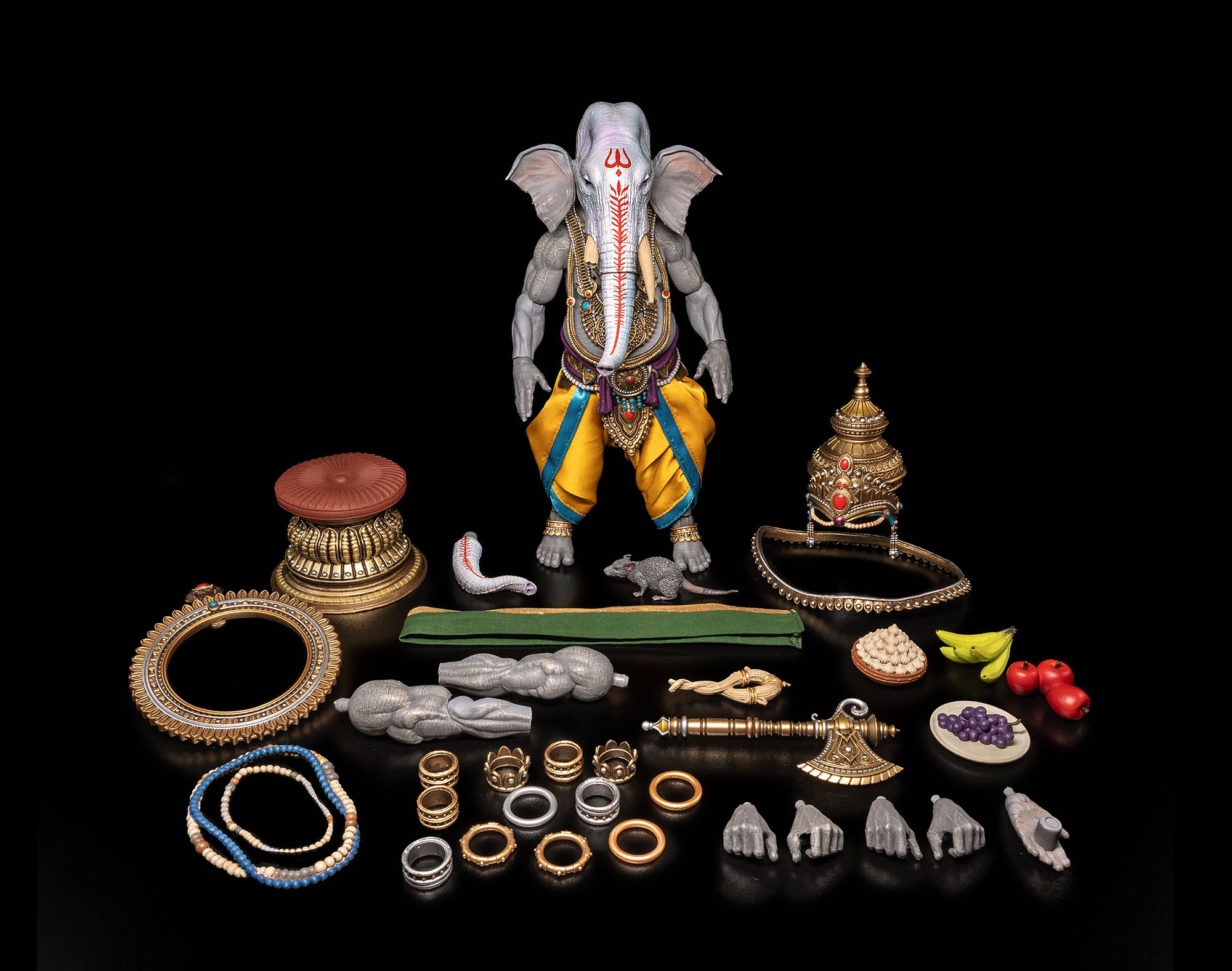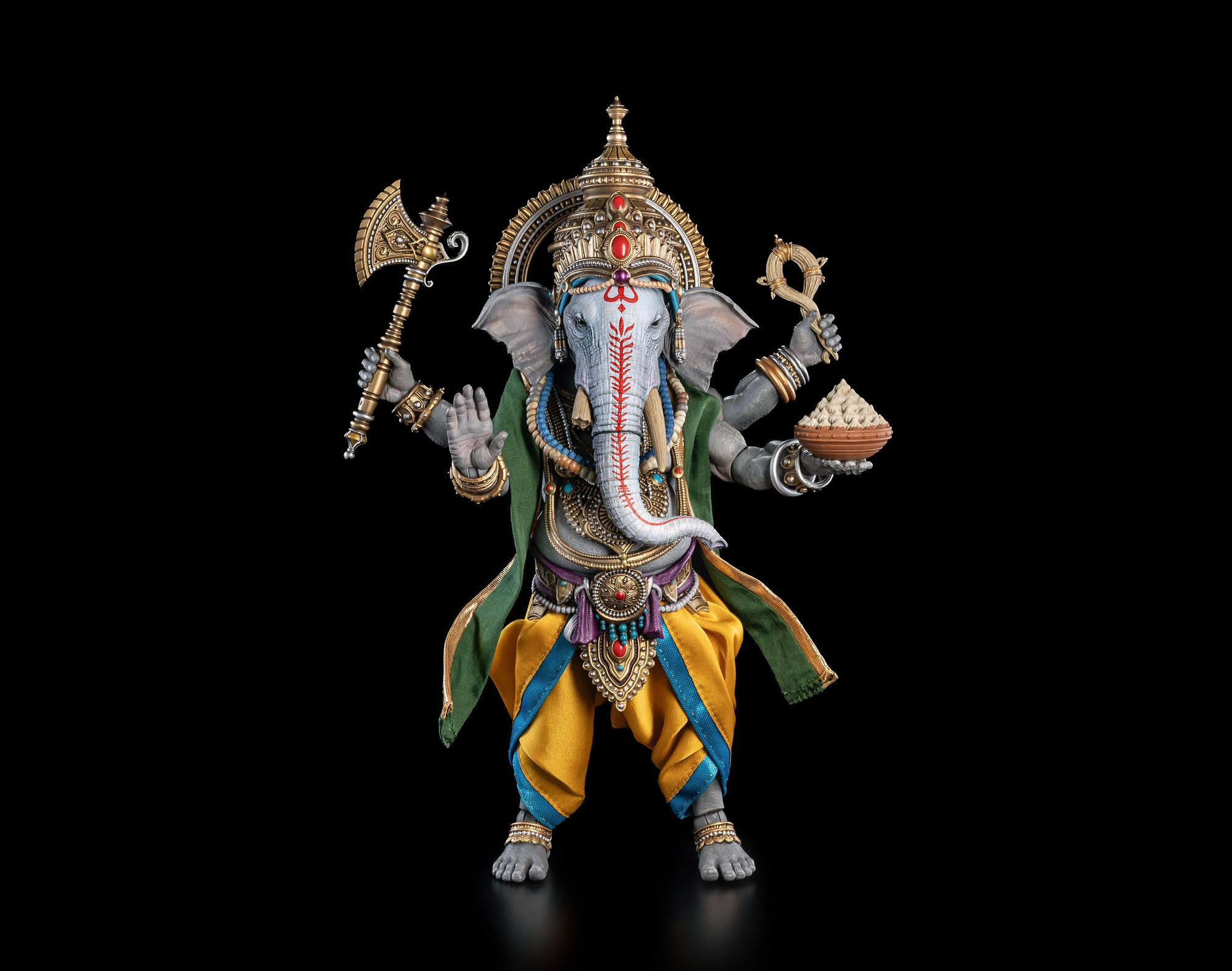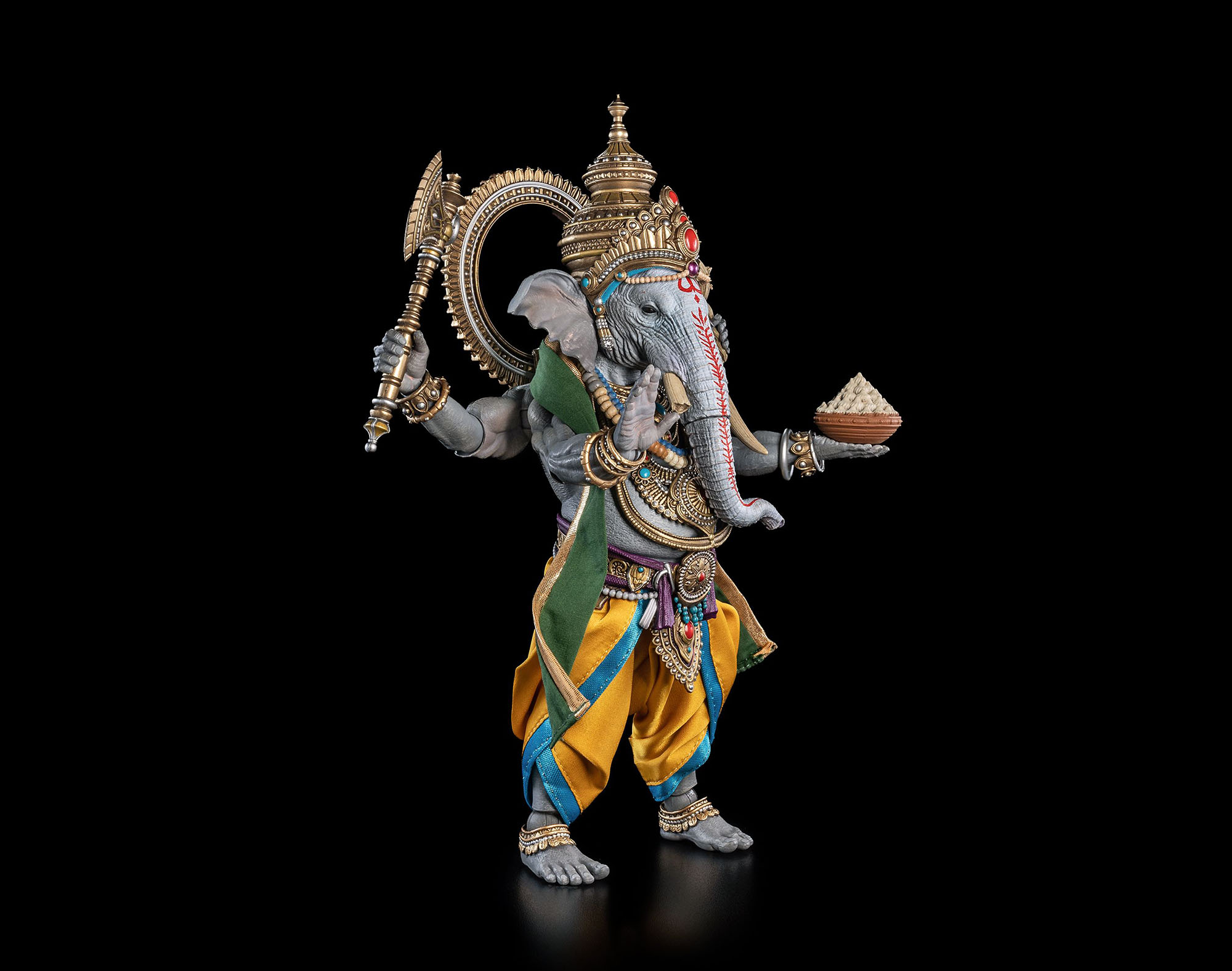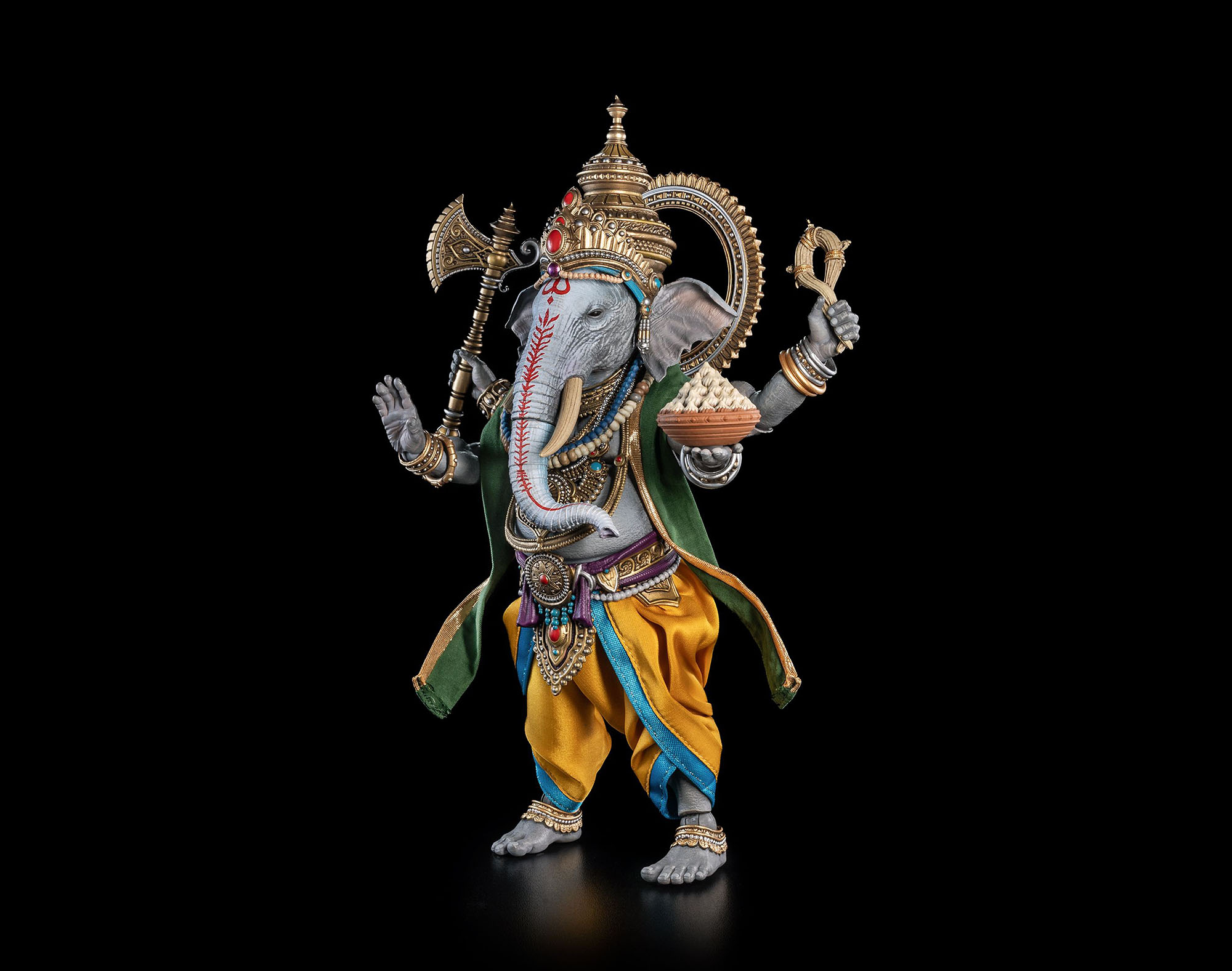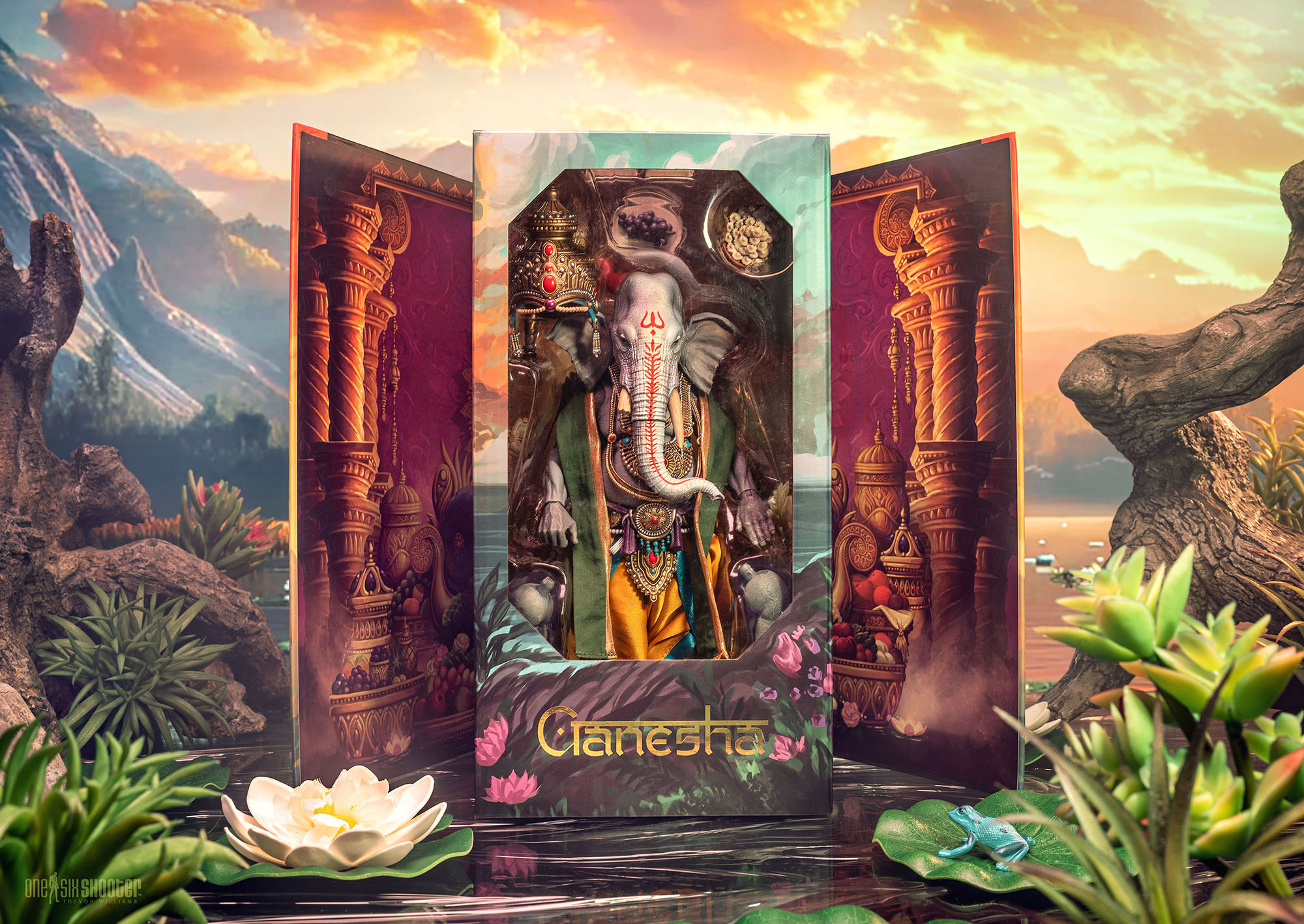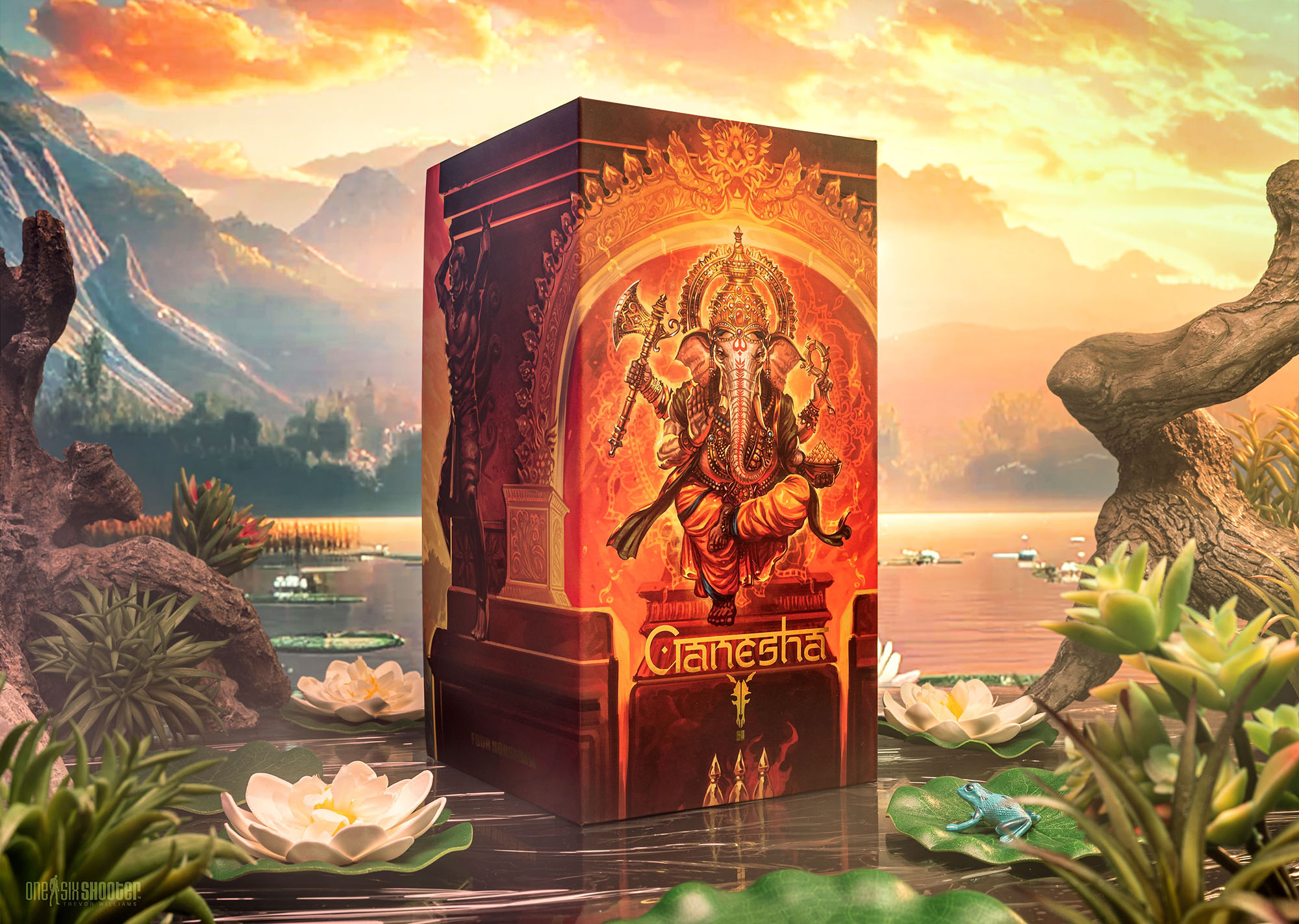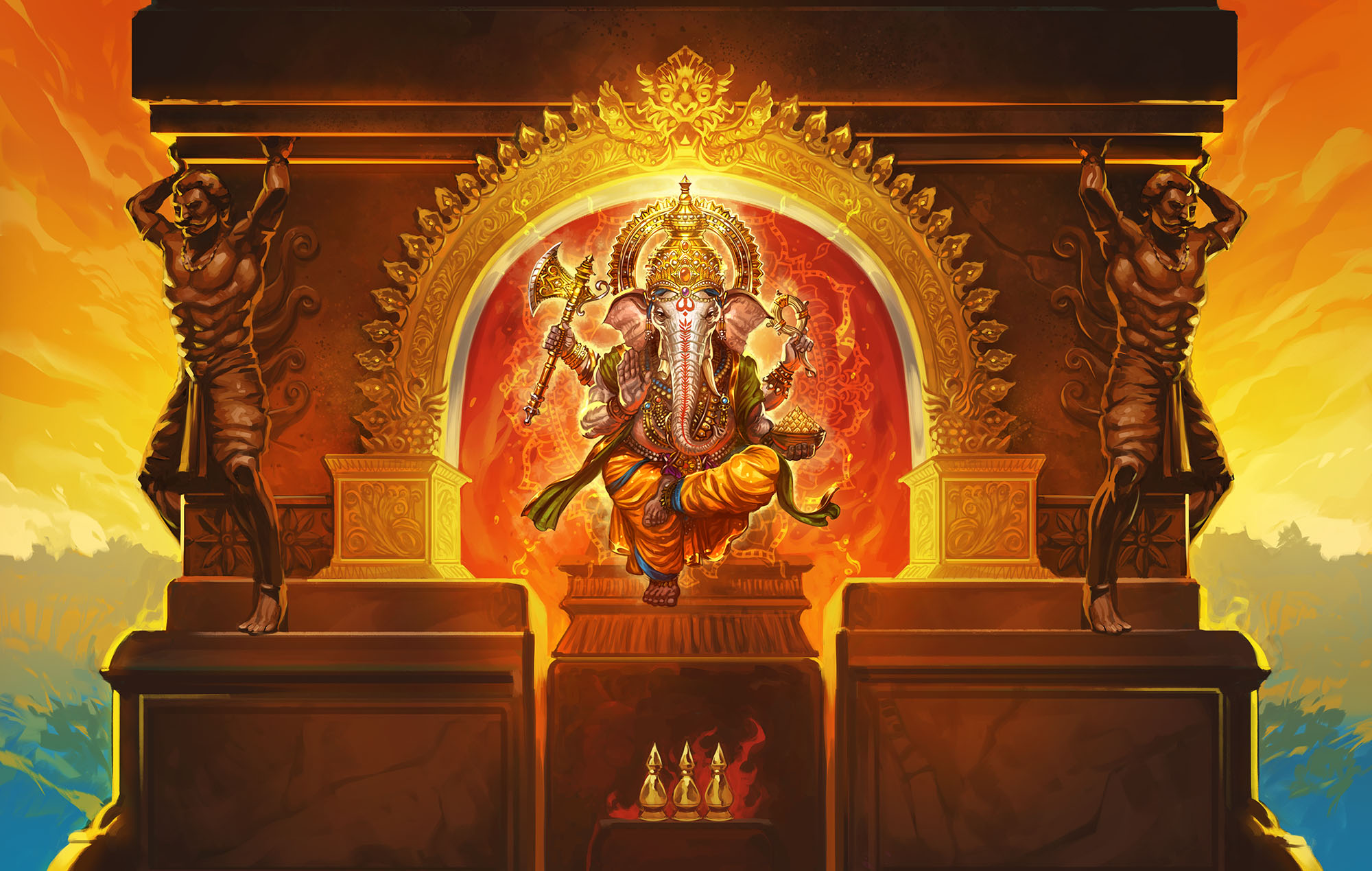The God of New Beginnings
Ganesha is a bringer of luck and remover of obstacles. This deity is worshipped by people as they begin new endeavors, hoping that his favor will bring them success in their dealings. Devotees often offer Ganesha sweets, and he is regularly depicted carrying a bowl of treats including modaka (a soft outer shell of rice or wheat flour filled with coconut and jagger) or spherical sweets called laddu.
Besides the commonly known names of Ganesha or Ganesh, this deity also has a number of names and titles across different cultures and languages, including Ganapati, Vinyaka, Lambodara, Maha Peinne, Khanet, and Pillaiyar.
Readily identifiable by his elephant head and four arms, Ganesha is considered a patron of the arts and sciences with attributes that include intellect and wisdom and he is often associated with education as a patron of letters and learning.
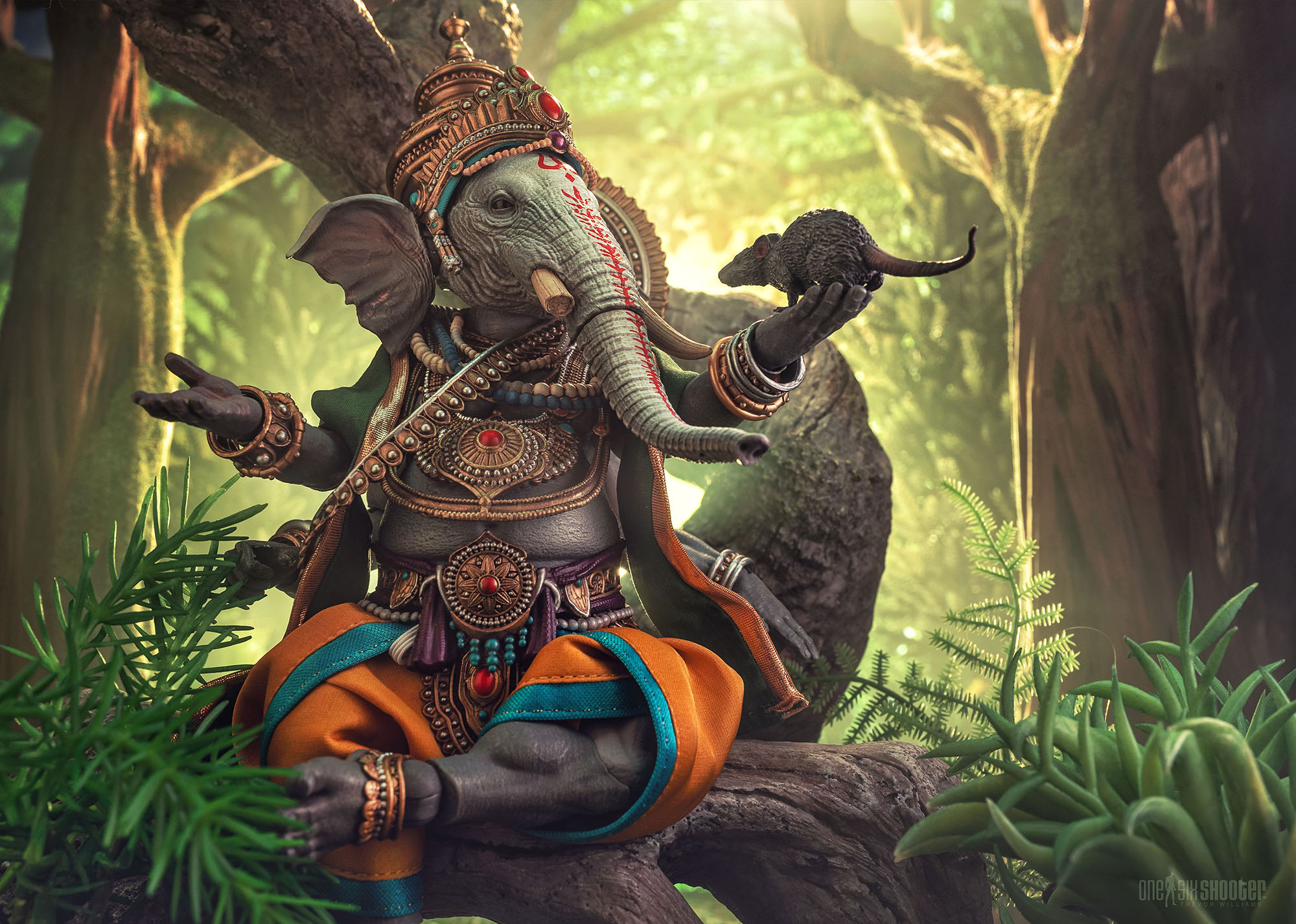
Ganesha is popularly represented as the son of Shiva and Parvati and the brother of Kartikeya, the Hindu God of War. He is mentioned in Hindu texts dating back to the 1st century BCE and the 2nd century CE and images of this deity from later centuries have been also been documented by modern scholars and historians.
Popularly represented in Indian art, there are images of Ganesha in all manners of situations – from playing with his family as a boy, to sitting or dancing, to taking action against demons!
Ganesha is also often shown riding upon a mouse or a rat. While there are numerous interpretations of what the rodent represents, one popular idea is that the rat is meant to symbolize a destructive pest or a type of obstacle that must be overcome. As the remover of obstacles and bringer of luck, Ganesha riding upon the rodent shows his control over that situation.
Ganesha is a non-sectarian deity that is worshipped by almost all castes and in all parts of India. In fact, it is said that nearly all Hindu homes in India have an idol of Ganapati, or Ganesha, in them and depictions of this deity can be found far outside of India.
The Stories of Ganesha
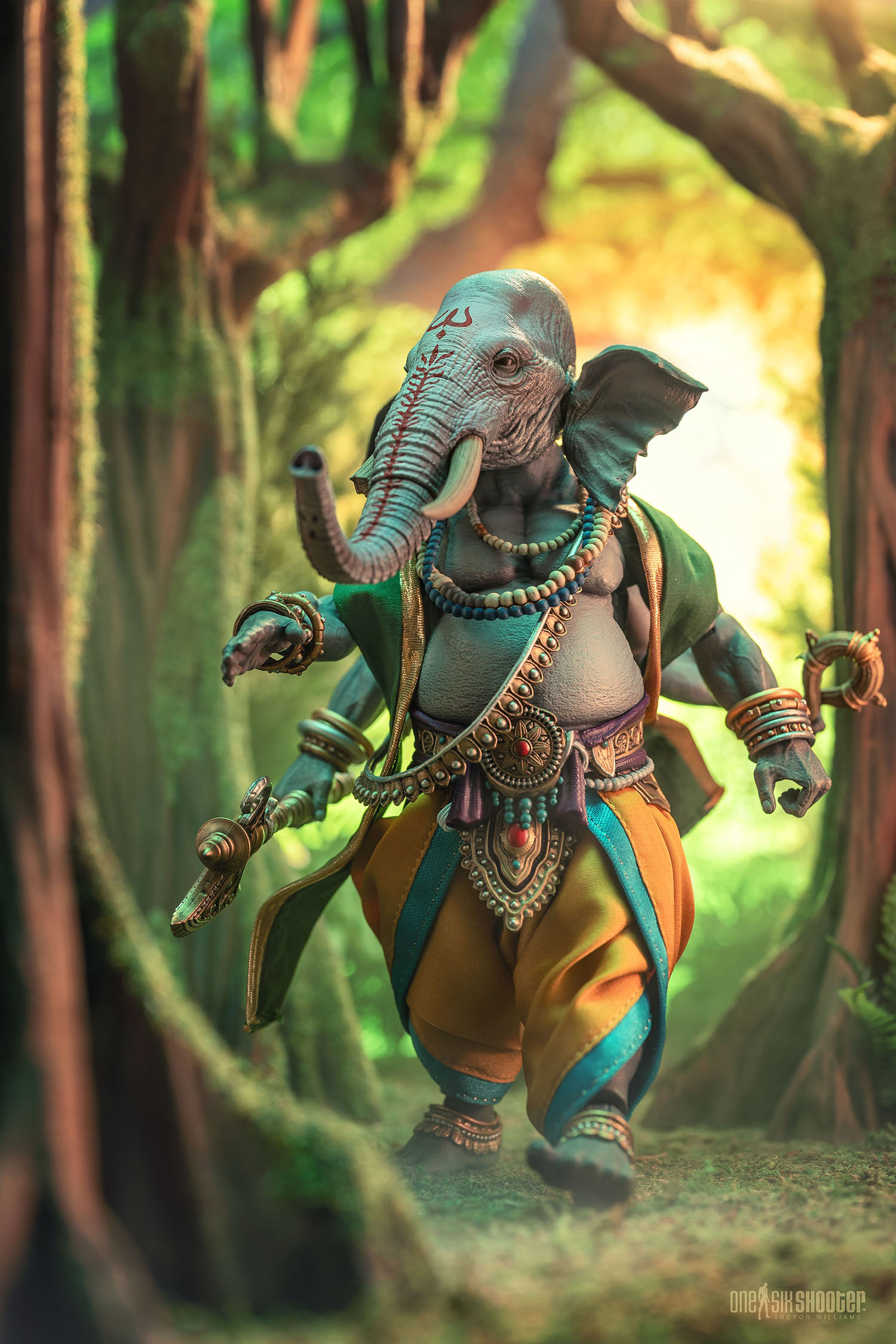
There are many stories of Ganesha, including some that illustrate his prodigious appetite, while others detail the blessings of success he bestows on those who worship him, and many which show his great wisdom. The Figura Obscura: Ganesha figure includes a booklet that retells 5 of these stories, including the one repeated below which is also featured on the figure’s packaging (see some art from that package below). This story is titled “The Wisdom of Ganesha.”
The two brothers, Ganesha and Kartikeya, lived on Mount Kalish with their father and mother, Lord Shiva and the Goddess Parvati.
One day, a wise man visited their mountain home, presenting Lord Shiva with a golden mango. This mango was very special, for although it could not be shared, whoever ate the fruit would possess the gifts of knowledge and wisdom.
As amazing as this gift was, it created a dilemma for Shiva and Parvati since they could not determine which of their two sons to give it to. They decided to present the brothers with a challenge, telling them that “whoever could go around the world three times would win the mango.”
Ganesha had a mouse that he used as a mount, while Kartikeya had a large peacock. Strong and able, Kartikeya jumped upon the peacock and the two of them flew off into the sky. Meanwhile, Ganesha and his mouse remained seated as he considered the challenge before them.
Kartikeya swooped by on his peacock, having made his first circle around the world.
Seeing his brother racing off once again, Ganesha calmly rose and began to walk towards his parents. Once. Twice. Three times he went around them in a circle.
“You are my parents,” he said as they looked at him with puzzled expressions. “You are my whole world. Walking around you three times is the same as going around the world.”
Impressed by their son’s cleverness, they presented Ganesha with the golden mango.
When Kartikeya returned from his third trip around the world, he saw the prized fruit in his brother’s hands. Kartikeya could not believe that he had lost the contest, but when he discovered how Ganesha had bested him, he knew that quick actions were not always best, and that fully considering a problem instead of racing to react was often the true path to success.
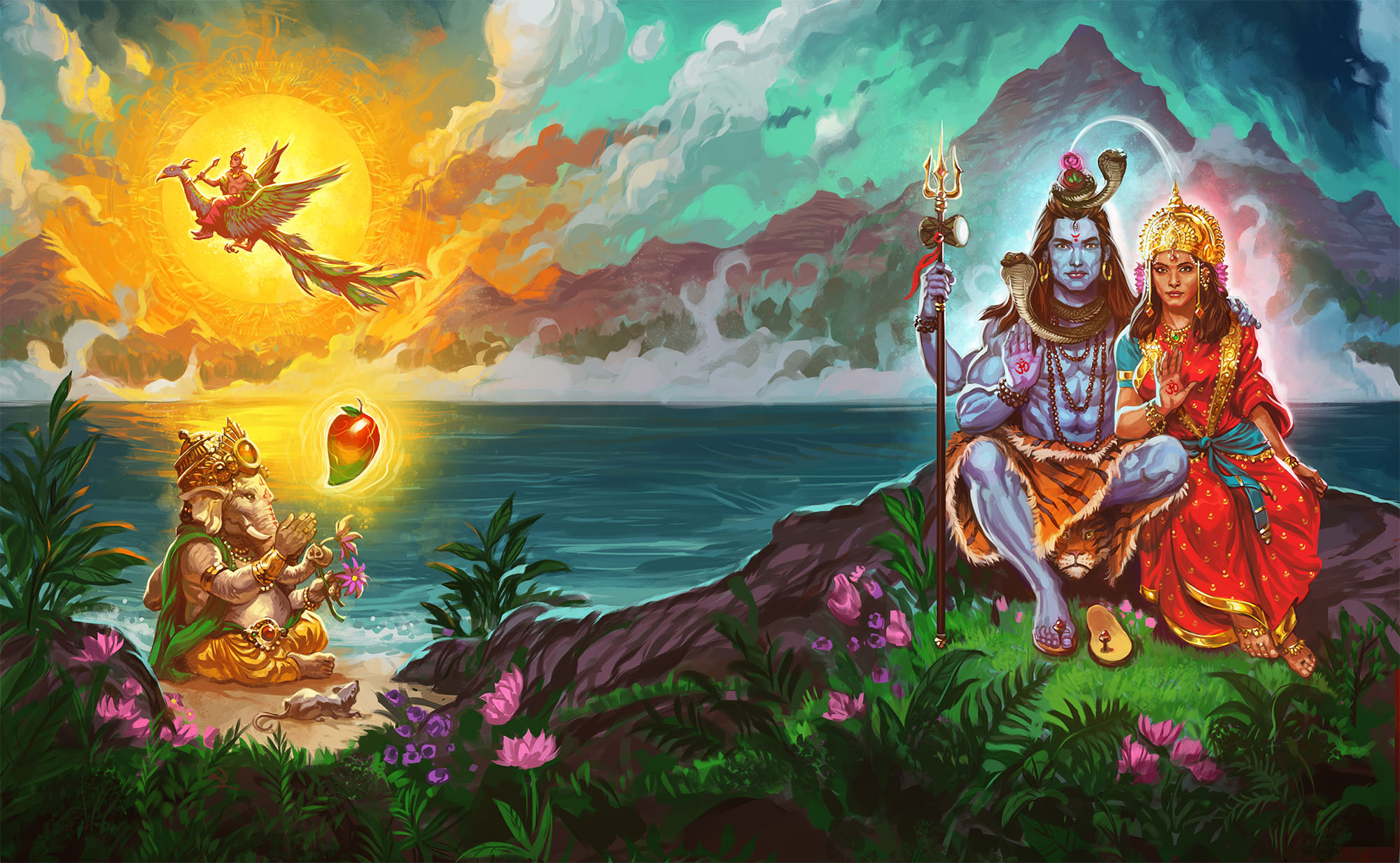
Ganesha in Figura Obscura
One of the most exciting aspects of the Figura Obscura line is our ability to explore different themes and character types and to be able to take inspiration from a wide range of different sources, including different world cultures. To date, the Figura line has included characters from American folklore and literature, including the Headless Horseman and the Masque of the Red Death, alongside others from across the world like Krampus (Bavaria), Sun Wukong the Monkey King (China), and Anubis/Bastet (Egypt). For this latest release in the Figura Obscura line, Eric wanted to visit a new part of the world and seek inspiration in one of the most iconic and beloved deities within the Hindu religion.
While Ganesha is not the first deity in the Figura Obscura line, the “Gods of Ancient Egypt” set having been released a year prior holds that honor, he is the first one that is still actively worshipped in our modern age. Figura Obscura has always tried to remain faithful and respectful of the characters we create for the line, but the need to do so was even more important for this release. Diving deep into research of Ganesha and how he is depicted and used in modern Hindu culture, and working with experts on the subject matter to ensure our ideas would honor this important character, we came up with perhaps the most detailed and elaborate (and largest) Figura Obscura release to date.
Ganesha is a brand-new “brute scale” figure from the bottom of his feet to the top of his removable crown. He features the elephant head and 4 arms that this deity is most known for, along with premium soft goods created by CJesim, a number of removable bracelets and other jewelry pieces, and character specific accessories including a bowl of modaka, a parashu (axe), a pasha, bowls of fruit, and a rat. While Ganesha only includes the single head, the crown is removable and that head features articulated ears and a “bendy” trunk. He also includes a number of extra hands and a base for the figure to sit on. The set is absolutely loaded with parts that were newly created for this special release.
The Art of Ganesha
As with all our Figura Obscura releases, the packaging artwork became an important part of this project, and the illustrations done for Ganesha are arguably the most stunning the line has seen yet.
For this box, Nate decided to illustrate one of the stories of Ganesha – the same story retold earlier in this article about “The Wisdom of Ganesha.” That art depicts a young Ganesha, his brother Kartikeya atop his peacock, and their parents – Lord Shiva and the Goddess Parvati. The packaging also includes a full illustration of Ganesha on the front panel and a number of other scenes throughout, including a wonderful backdrop piece on the inside panel done by both Nate and Tom Tolman.
The artwork of Ganesha was also used to create pins, mugs, and t-shirts (the later being offered by RetroRags Limited).
The Figura Obscura Grows Ever Larger
With the release of Ganesha, Figura Obscura now enters our 5th year of releases (the first being Krampus back in 2021) and our 11th overall figure (not counting retailer editions). While we have already covered lots of ground and offered some interesting variety in the line, we are truly just getting started. 2025 is shaping up to be the most surprising year of Figura Obscura yet! Stay tuned, for you never know who will enter the halls of the Figura Obscura next.

